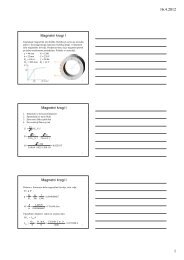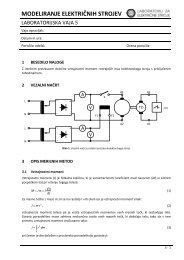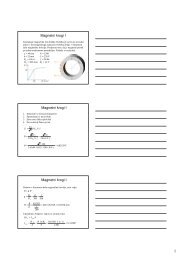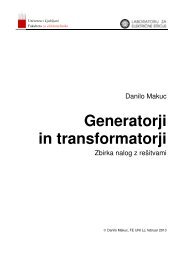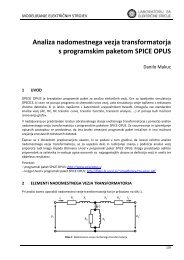Maxwell SV Getting Started: A 2D Electrostatic Problem - LES
Maxwell SV Getting Started: A 2D Electrostatic Problem - LES
Maxwell SV Getting Started: A 2D Electrostatic Problem - LES
You also want an ePaper? Increase the reach of your titles
YUMPU automatically turns print PDFs into web optimized ePapers that Google loves.
<strong>Getting</strong> <strong>Started</strong>: A <strong>2D</strong> <strong>Electrostatic</strong> <strong>Problem</strong><br />
Set Up Materials<br />
To define the material properties for the objects in the geometric model, you must:<br />
• Assign the properties of a perfect conductor to both microstrips and the ground plane.<br />
• Assign FR4-epoxy, a dielectric commonly used in circuit boards, to the substrate.<br />
In general, to assign materials to objects:<br />
1. If necessary, add materials with the properties of the objects in your model to the material database.<br />
2. Assign a material to each object in the geometric model as follows:<br />
a. Select the object(s) for which a specific material applies.<br />
b. Select the appropriate material.<br />
c. Click Assign to assign the selected material to the selected object(s).<br />
In this sample problem, you do not have to add materials to the material database — all materials<br />
that you will need are already included in the global material database that the simulator makes<br />
available to every project.<br />
Note You must assign a material to each object in the model.<br />
Access the Material Manager<br />
To access the Material Manager:<br />
1. Click Setup Materials. A warning window appears, explaining that materials with a conductivity<br />
greater than 10000 siemens per meter will be treated as perfect conductors and will be<br />
excluded from the solution region. Materials with lower conductivities will be included in the<br />
solution region; the conductivities of such materials will not effect the electrostatic simulation,<br />
since no current flow is modeled.�<br />
Note For highly conductive materials such as copper, the potential is the same across an object<br />
that is assigned the material. Because of this, <strong>Maxwell</strong> <strong>2D</strong>’s electrostatic field solver does<br />
not generate a solution inside objects assigned these materials. Instead, it treats them as<br />
though they were perfectly conducting.<br />
5-2 Defining Materials and Boundaries



